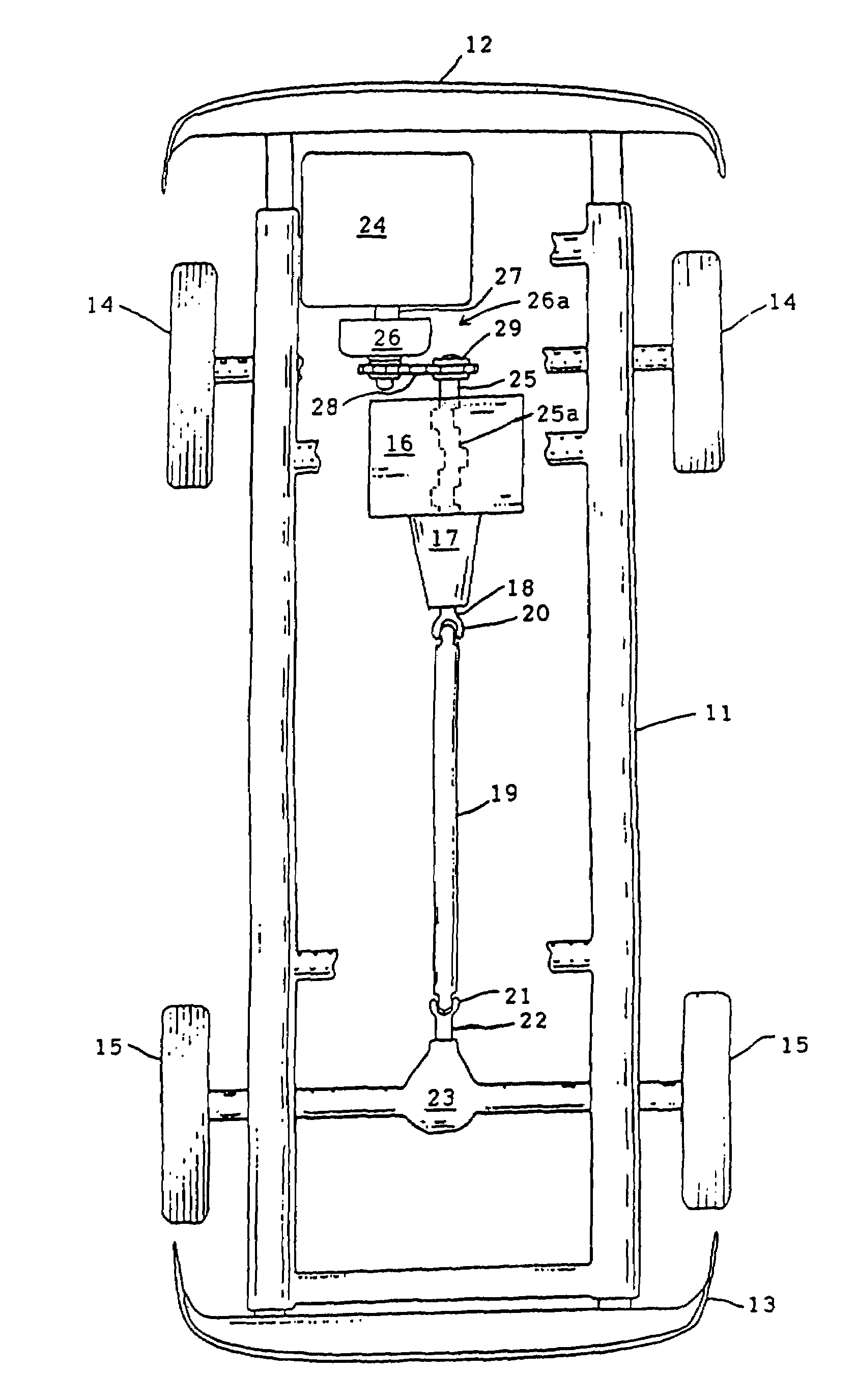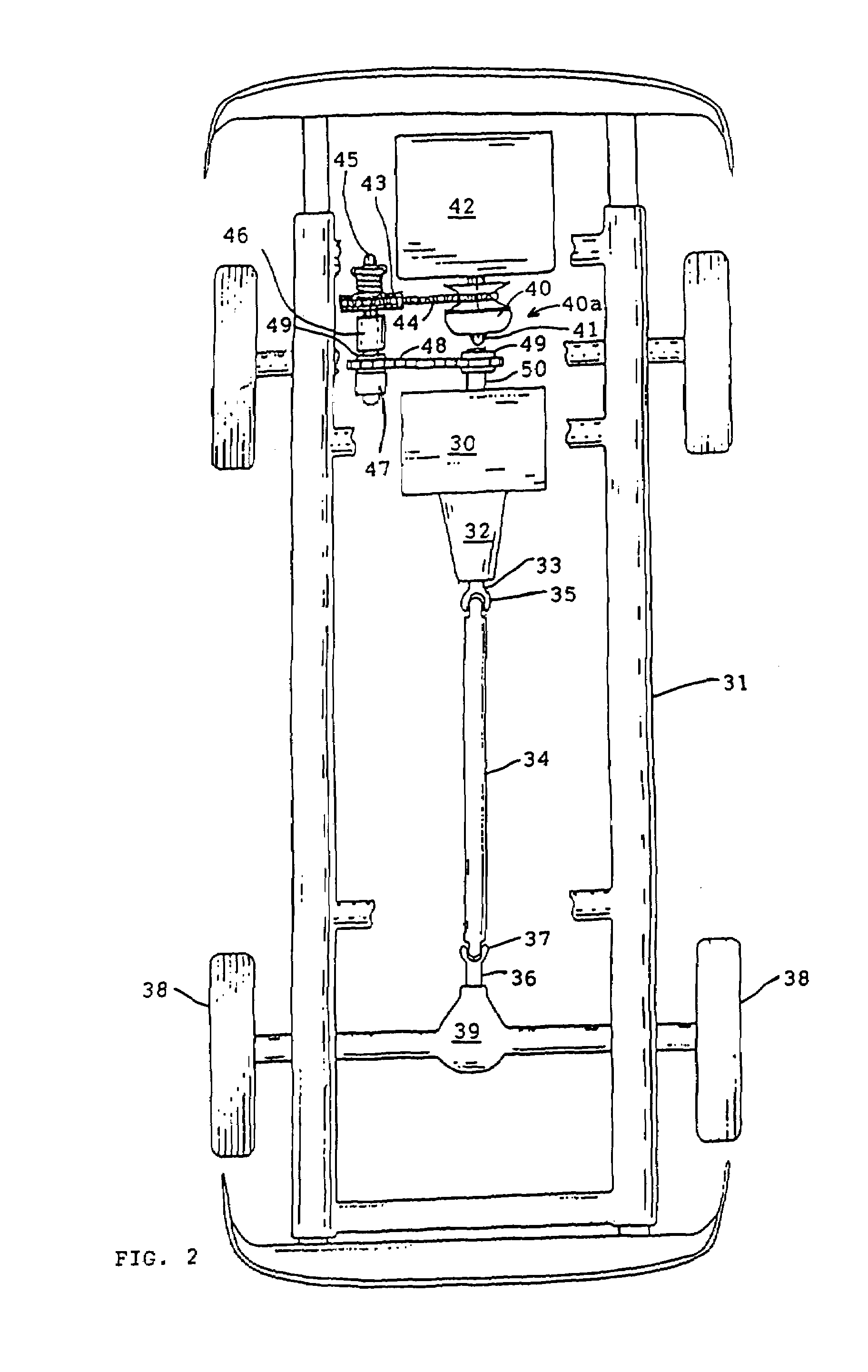Vehicle with primary cruiser engine and auxiliary accelerator engine
a technology of auxiliary accelerator and cruiser engine, which is applied in the field of vehicles, can solve the problems of poor acceleration performance, complex hybrid vehicle structure, and high manufacturing and maintenance costs, and achieve the effects of improving acceleration performance, reducing production costs, and reducing production costs
- Summary
- Abstract
- Description
- Claims
- Application Information
AI Technical Summary
Benefits of technology
Problems solved by technology
Method used
Image
Examples
Embodiment Construction
[0047]Referring now to the drawings wherein one character designates one part of the vehicle, FIG. 1 shows the vehicular chassis 11 connected to front bumper 12 and rear bumper 13, and supported by paired front wheels 14 and rear wheels 15.
[0048]A power train is shown comprised of primary “cruiser” engine 16 mounted on chassis 11 and coupled to an automatic or manual transmission 17 whose output shaft 18 is coupled to propeller shaft 19 through front universal joint 20. Propeller shaft 19 is coupled through rear universal joint 21 to pinion 22 of differential 23 which drives the driving (rear) wheels 15.
[0049]Although the power train so far described for the embodiment of FIG. 1 appears to resemble the power train of a standard front engine, rear wheel drive vehicle, in this invention it is modified in three specific ways, namely: a) primary engine 16 is of down-sized capacity to produce only enough power to maintain the vehicle at a satisfactory cruising speed with maximum fuel eco...
PUM
 Login to View More
Login to View More Abstract
Description
Claims
Application Information
 Login to View More
Login to View More - R&D
- Intellectual Property
- Life Sciences
- Materials
- Tech Scout
- Unparalleled Data Quality
- Higher Quality Content
- 60% Fewer Hallucinations
Browse by: Latest US Patents, China's latest patents, Technical Efficacy Thesaurus, Application Domain, Technology Topic, Popular Technical Reports.
© 2025 PatSnap. All rights reserved.Legal|Privacy policy|Modern Slavery Act Transparency Statement|Sitemap|About US| Contact US: help@patsnap.com



